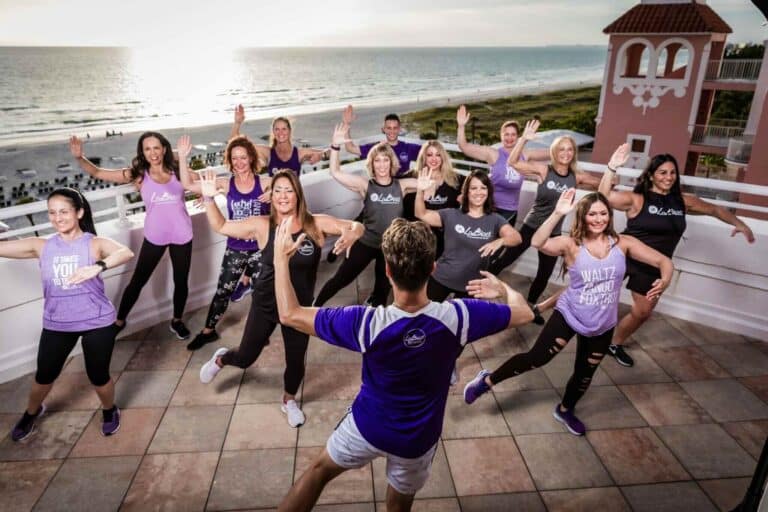Editor’s note: This is a guest blog authored by our partners at Navigate: Lindsey Conwell (VP of Strategic Partnerships) and Dallas Schmitz (Content Strategist).
Organizations that are able to implement an employee wellbeing program with diversity and inclusion will see positive benefits with happier and healthier employees. Their happiness leads to:
- Improved work performance and higher productivity
- Better retention and lower hiring costs
- Reduced absenteeism and sick days
- Lower healthcare costs
Gallup also reports that employees who feel their wellbeing is a core focus of their employers are 4.1x more likely to be engaged. Employee wellbeing programs can also result in:
- Improved cohesion across departments and teams
- Decreased dependent healthcare costs
- Improved preventative care, mitigating health concerns
However, without intentional steps to be diverse and inclusive in your offerings, there is often a bias towards a subset of your workforce. That can make wellbeing offerings exclusive and limit internal adoption and established benefits to employees’ health and wellness.
We’ll dive into the importance of focusing on diversity and inclusion in your corporate employee wellbeing program, how you can do that, and what benefits you (and your employees) can expect from your efforts.
Why diversity and inclusion is critical for employee wellbeing programs
While employee D&I might be top of mind for your other policies and programs, it might not be the first thing that comes to mind when you consider holistic wellbeing. However, it is important to remember that there is no one-size-fits-all approach to health, benefits, and employee wellbeing.
Not every employee will be inspired by a young, fresh face with a six-pack; similarly, not everyone will have the same abilities to engage in classes. In order for your programming to be inclusive, it needs to reflect the diversity of your workforce.
Relatable instructors, credentialed in their area of expertise, are vital so your employees can make a personal connection with their trainers and keep returning. Consider solutions that provide a wide representation of age, race, ability, wellbeing categories, and class length. This will improve employee engagement and allow every employee the opportunity to continue on their wellbeing journey with your benefits/offering.
How HR can focus on employee D&I in wellbeing programs
Here are a few ways that your HR team can prioritize DEI in your benefits and employee wellbeing programs:
- Choose an accessible platform where employees can access their benefits, wellbeing solution, and programming
- Ensure anonymity with surveys and searches for benefits to reduce the stigma of getting help or that might surround a chronic condition
- Look for programming that includes adaptive class offerings as part of the main solution so that your employees can have a common point of reference (and compete in challenges together)
- Consider programming that works with diverse and relatable instructors
- Offer a broad range of programming to meet every ability or level
- If you can, go a step further and include access to employees’ families so they can all pursue health together (Burnalong offers four free family accounts with every employee membership, and Navigate has program levels that allow users to engage their spouses)
- Provide inclusive employee challenges (not just steps that preclude those in assistive devices)
- Especially for multilingual workforces, make sure the program and/or solution supports multiple languages
- Look for employee wellbeing apps that offer various time commitment options to work for parents, beginners, etc.
- Provide wellbeing programs that support your employees – no matter what stage of life they are in, and that reinforce your overall commitment to their wellbeing
Benefits of focusing on D&I with wellbeing
Aside from the obvious benefits that come with reduced healthcare costs from healthier employees, HR can also expect happier, more engaged employees when you offer diverse and inclusive wellbeing programs.
This can lead to improved retention with employees who feel seen, represented, and truly supported by leadership with the comprehensive benefits package. Further, this can also reduce recruitment costs while making your organization more attractive to a diverse pool of candidates who are looking for employers who provide attractive benefits.
Your employees are tired and retention is a big issue right now across the country. Are you investing in their wellbeing in a holistic and meaningful way?
Navigate and Burnalong are partnering to help companies just like yours get it right. Don’t let the “Great Resignation” make you another statistic. Focus on the most meaningful support your employees are looking for right now. We’d love to help you.
About the Authors
Lindsey Conwell is the VP of Strategic Partnerships at Navigate. When she’s not connecting clients with the strategic tools and resources they need, you can find Lindsey enjoying time with her husband, two daughters, and son.
Dallas Schmitz is a Content Strategist at Navigate. He relies on creative skills in his personal life, too, while answering thousands of questions about ninjas and/or dinosaurs from his two young sons.






